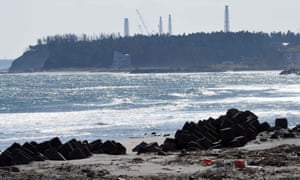Fukushima nuclear reactor radiation at highest level since 2011 meltdown | Environment | The Guardian
Extremely high radiation levels have been recorded inside a damaged reactor at the Fukushima Daiichi nuclear power station, almost six years after the plant suffered a triple meltdown.
The facility’s operator, Tokyo Electric Power (Tepco), said
atmospheric readings as high as 530 sieverts an hour had been recorded
inside the containment vessel of reactor No 2, one of three reactors
that experienced a meltdown when the plant was crippled by a huge tsunami that struck the north-east coast of Japan in March 2011.
The extraordinary radiation readings highlight the scale of the task confronting thousands of workers, as pressure builds on Tepco to begin decommissioning the plant – a process that is expected to take about four decades.
Even if a 30-percent margin of error is taken into account, the
recent reading, described by some experts as “unimaginable”, is far
higher than the previous record of 73 sieverts an hour detected by
sensors in 2012.
Tepco pointed out, however, that the camera had probed deeper inside
the reactor than before and had focused on a single point. Radiation
levels at other spots filmed by the camera are estimated to be much
lower, it added.
A single dose of one sievert is enough to cause radiation sickness and nausea;
5 sieverts would kill half those exposed to it within a month, and a
single dose of 10 sieverts would prove fatal within weeks.
Tepco also said image analysis had revealed a hole in metal grating
beneath the same reactor’s pressure vessel. The one-metre-wide hole was
probably created by nuclear fuel that melted and then penetrated the
vessel after the tsunami knocked out Fukushima Daiichi’s back-up cooling
system.

Cranes over the Fukushima Daiichi plant in February 2016. The decommissioning process is expected to take about four decades
Photograph: Toru Yamanaka/AFP/Getty Images
